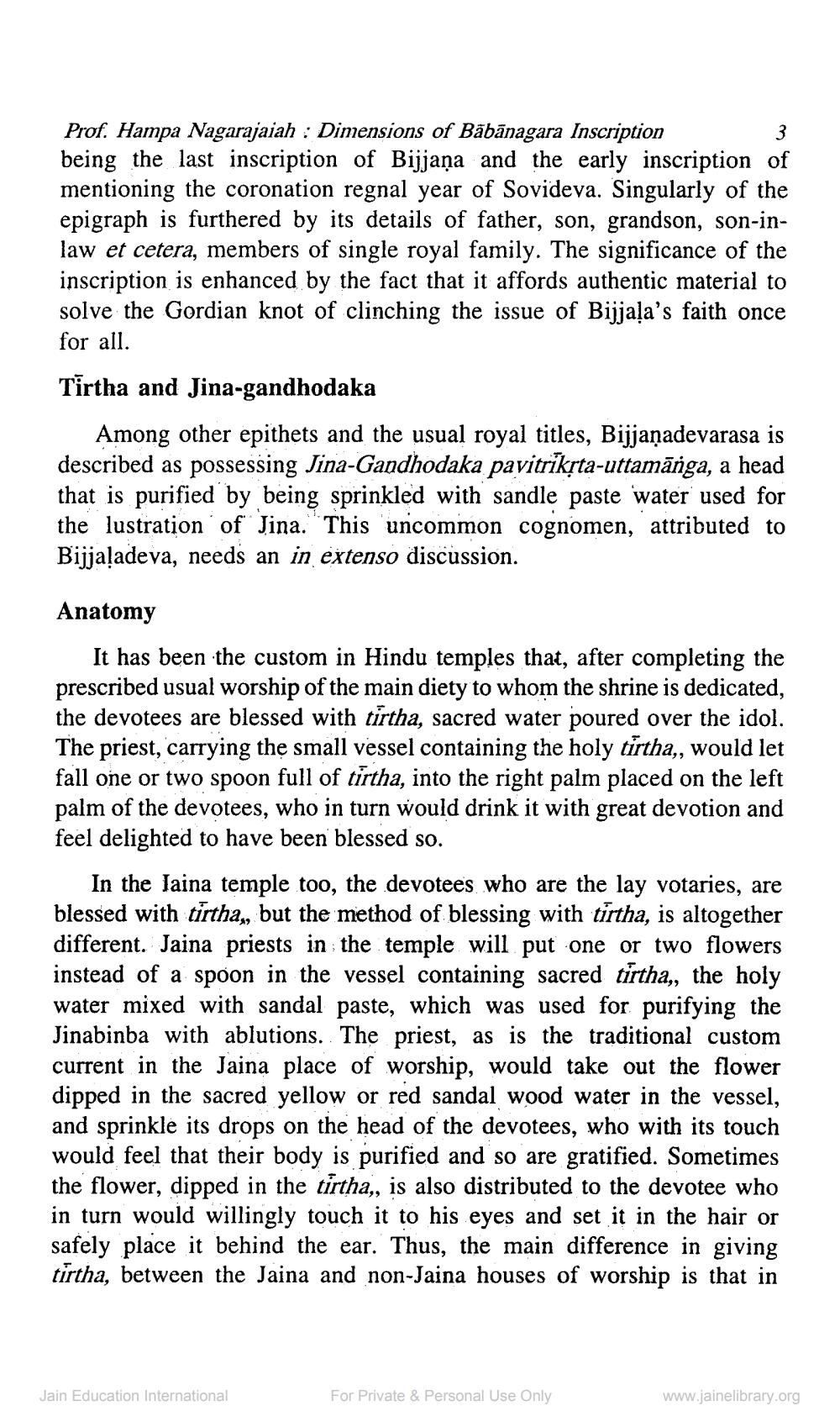________________
Prof. Hampa Nagarajaiah: Dimensions of Bābānagara Inscription
3
being the last inscription of Bijjana and the early inscription of mentioning the coronation regnal year of Sovideva. Singularly of the epigraph is furthered by its details of father, son, grandson, son-inlaw et cetera, members of single royal family. The significance of the inscription is enhanced by the fact that it affords authentic material to solve the Gordian knot of clinching the issue of Bijjala's faith once for all.
Tirtha and Jina-gandhodaka
Among other epithets and the usual royal titles, Bijjaṇadevarasa is described as possessing Jina-Gandhodaka pavitrikṛta-uttamānga, a head that is purified by being sprinkled with sandle paste water used for the lustration of Jina. This uncommon cognomen, attributed to Bijjaladeva, needs an in extenso discussion.
Anatomy
It has been the custom in Hindu temples that, after completing the prescribed usual worship of the main diety to whom the shrine is dedicated, the devotees are blessed with tirtha, sacred water poured over the idol. The priest, carrying the small vessel containing the holy tirtha,, would let fall one or two spoon full of tirtha, into the right palm placed on the left palm of the devotees, who in turn would drink it with great devotion and feel delighted to have been blessed so.
In the Jaina temple too, the devotees who are the lay votaries, are blessed with tirtha,, but the method of blessing with tirtha, is altogether different. Jaina priests in the temple will put one or two flowers instead of a spoon in the vessel containing sacred tirtha,, the holy water mixed with sandal paste, which was used for purifying the Jinabinba with ablutions. The priest, as is the traditional custom current in the Jaina place of worship, would take out the flower dipped in the sacred yellow or red sandal wood water in the vessel, and sprinkle its drops on the head of the devotees, who with its touch would feel that their body is purified and so are gratified. Sometimes the flower, dipped in the tirtha,, is also distributed to the devotee who in turn would willingly touch it to his eyes and set it in the hair or safely place it behind the ear. Thus, the main difference in giving tirtha, between the Jaina and non-Jaina houses of worship is that in
Jain Education International
For Private & Personal Use Only
www.jainelibrary.org




